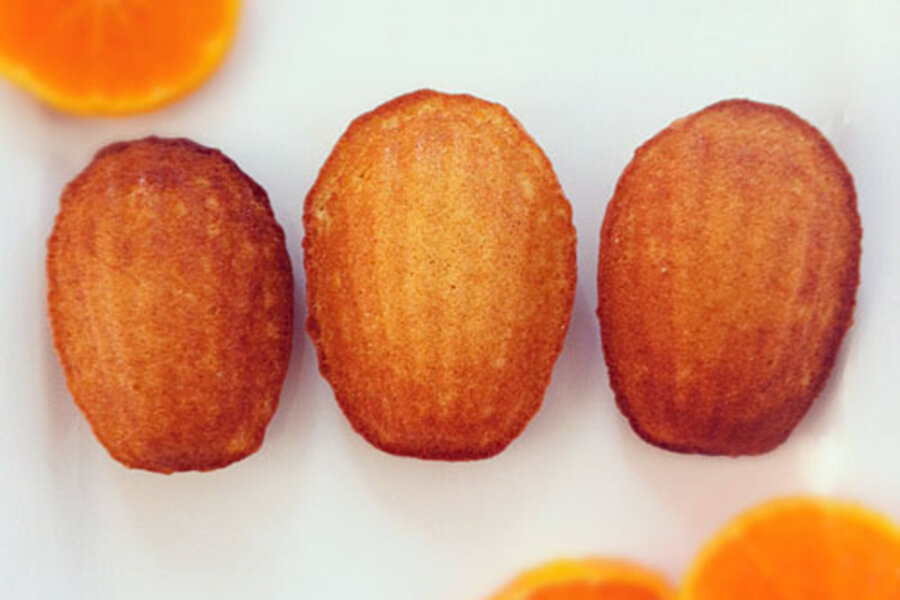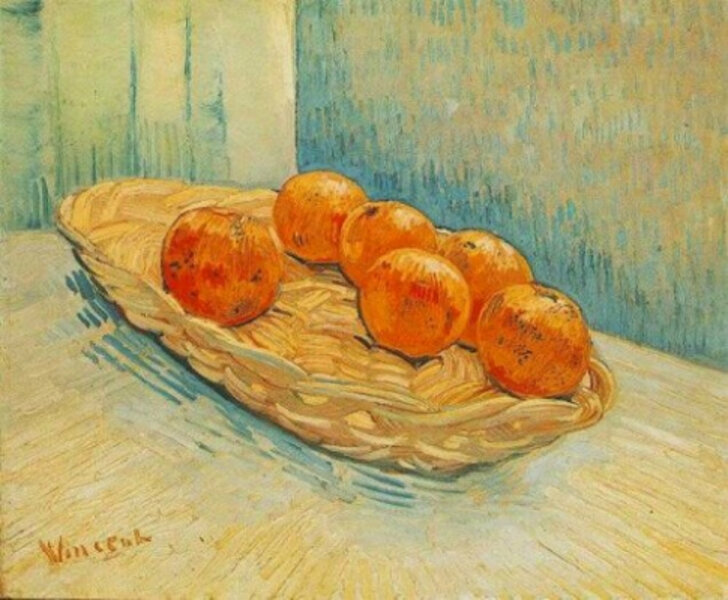Orange honey madeleines
Loading...
This post has been a long time coming. Between a few freelance writing projects and my curatorial debut, I have had very little free time left to finish this post. Plus I have managed to forget butter the last three times I went grocery shopping. Without it, these pretty madeleines would have been very sad tasting. A madeleine is a small sponge cake that hails from the northeast of France – the Lorraine region to be exact. The cakes are distinctive for their shell-like appearance and are made with a dedicated pan especially for madeleines, available at most home-ware shops.
Vincent van Gogh composed "Still Life with Basket and Six Oranges" in 1888 while he was in Arles-sur-tech, France. At this time he adopted a brighter palette and his paintings were saturated with yellow, ultramarine and mauve. The still life above epitomizes the natural vibrant light of the landscapes in the region. The sun-drenched fields and azure water of the Mediterranean are echoed in the background of the painting.
Adapted from Bon Appétit
Yield: 16 madeleines
3/4 cup flour
1/2 teaspoon baking powder
1/3 teaspoon salt
2 eggs
1/3 cup sugar
2 tablespoons honey
2 teaspoons vanilla extract
1/2 teaspoon orange zest
5 tablespoons butter, melted
In a bowl, add the flour, baking powder and salt – mix well. In another bowl, beat the eggs and sugar together for around 4 minutes. Add the honey, vanilla and orange zest to the egg mixture and mix well. Slowly fold in the flour mixture and once incorporated, add the melted butter and gently mix.
Preheat the oven to 400 degrees F., and position a rack in the center. Prepare the madeleine molds by rubbing a bit of butter in each one. Drop around 1 tablespoon of batter in each mold and slide into the oven for around 7-10 minutes. Once they appear golden, test to see if they are done by poking a toothpick in the centre of the madeleines, when it comes out clean they are done.
When removing the madeleines from the oven, quickly remove them from the pan, do not let them sit and continue to cook. Serve either warm or at room-temperature.








